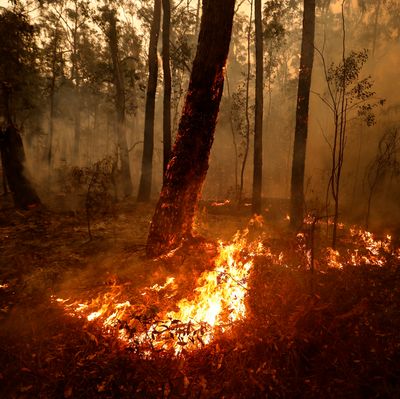
Scenes out of Australia’s raging bushfires continue to be devastating. But as frightening as they are, it might be even more terrifying to realize that photos of red skies and the charred bodies of animals are only displaying a small fraction of the true loss of life in the region.
Nothing encapsulates this more than tallying the damage to Australia’s insect world, where entire species are being wiped out — some just as researchers were beginning to understand them. While videos of cuddly, beloved animals like kangaroos and koalas have gone viral in the wake of the fires, researchers and scientists are also thinking about the bugs. They may not readily elicit as much sympathy, but they play vital roles in our fragile ecosystems, and their loss will reverberate all the way up the food chain.
Insects are essential for processing waste, for pollination, as nutrition for other species, and for myriad ecological functions. Global insect populations are already under sustained existential threat: According to a study published last year, they could go extinct within a century, which scientists say could lead to “catastrophic collapse of nature’s ecosystems.”
Australia is “megadiverse,” “meaning it belongs to a group of countries that together are home to 70 percent of the world’s biological diversity but make up just 10 percent of Earth’s surface,” per the New York Times. That also means it’s dangerously likely that damage from the fires to groups of insects could lead to extinction virtually overnight. The fires have burned through areas where, for example, the last population of Ligurian honeybees in the entire world were living, and where the incredibly rare blue velvet worm has its home in rotting logs vulnerable to fire. (Velvet worms are actually very cute; they have curly little antennae that make them look like tiny walrus, and sleep in a pile together, referred to by scientists as a “cuddle of velvet worms.”)
“It’s a slow, creeping stress,” one scientist told the Times, of watching fires get closer and closer to the insects she studies over the four months they have been burning. She was talking about grasshoppers that turn an electric turquoise when their body temperature rises. Of Australia’s 250,000 insects, only one-third have even been named; we may not ever truly know exactly what we’ve lost in these blazes.





